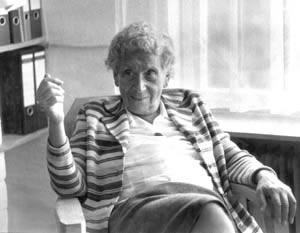A respectful approach to parenting
The Pikler Approach is a way of raising infants and small children that is highly respectful of who they are as individuals, giving great emphasis to freedom of movement, self-initiated play, and attentive caregiving between the child and the adult.
Great emphasis is given to the way caregivers approach routine moments of daily life with their infants. When time is taken to carefully dress, bathe, and feed our children, speaking to them and not over them, we invite them to be full participants in their lives. Even at the very youngest age, little babies can sense the difference between this slow and gentle approach to care, and will relax (or tense, as the case may be) accordingly.
In the Pikler Approach, studies have shown that children can learn to go from lying on their backs to walking without physical assistance from caregivers and parents. Instead, the role of the parent is to constantly observe their child's abilities and to provide a simple and safe environment that will invite the child to move freely and independently.
These are moments of play that adults do not dictate. There are no rules (unless the child makes them up) or goals, other than testing out imaginary scenarios, developing or processing emotions, and building psychological resilience. When play is driven by an inner motivation, rather than dictated by an external influence, children can develop their ability to think for themselves, to be driven, and to feel confident.
Emmi Pikler, Gross Motor Development, and Connection

After studying under two pediatricians who valued the relationship with their young patients, making sure their care was more than palliative, Dr. Emmi Pikler began her own work with children, specifically on newborns through to early school years. Concentrating on connection with the child and prevention of physical developmental abnormalities, Dr. Pikler began to make connections between allowing infants free movement (i.e. not putting them into positions, rolling them over, or making them sit or stand before they can do it themselves) and the relationship with the individuals who cared for them. Essentially, when a child felt comfortable with their caregivers, they were better able to relax. In the absence of physical tension, they could then physically develop well, and freely.
After the end of World War II, she worked for a national institution that helped children abandoned by the war. She opened an orphanage and began to put her ideas to the test to see if she could help children in an institutional, underprivileged situation to develop just as well physically and emotionally as children in more stable environments.
Trying out the Pikler Method
When participating in caregiving having a "Go Slow" mindset can encourage you to help even very young babies to be involved in the process. By paying attention to the way your child's body feels in your hands as you dress, bathe, and diaper them, you have the opportunity to sense how they're feeling. Are they tense, crying, or upset? This could be a good time to go even more slowly, taking note of when your child's body relaxes. Communicating what you are doing to the child in a measured and calm voice, and making eye contact with them as you go, helps build connection, awareness, and respect. Conversely, when your movements are rushed, you may notice that your child is tenser and less likely to be cooperative. If you consider routine moments as high points of connection and bonding with your child, you and your child are more likely to look forward to them, and less likely to rush through them to get to the next thing on your to-do list or agenda.
Every child is unique and will grow and develop at varying paces. If you view your job as the parent to observe your child's changing needs, it is probable that you will be in the best position to provide the appropriate tools, toys, and environment that will help with your child's specific stage of development. A carefully prepared environment that holds both developmental and interest-appropriate materials can inspire movement and growth. As you maintain a habit of observing your child's emotional and environmental needs, you will likely discover that they are ever-changing. As your child’s needs, capabilities, and interests change, you may find that they need a space free of dangers, that is predictable, and a little challenging.
It can be very tempting as a parent to place your child in positions they could not otherwise get into by themselves, like standing or sitting up. However, it can be beneficial to let your child be in positions they have the physical capability to acquire. When they struggle to roll over, instead of helping them do it, try taking a step back and allowing them to figure out their body and its movements unaided. Something that can be helpful in doing this is adopting the belief that your child can go from lying on their back through all the developmental stages of growth to walking - all without any physical assistance from caregivers, parents, or siblings.








